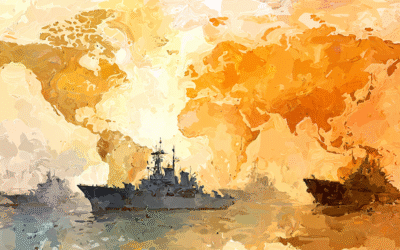In 1968, the cultural anthropologist Mary Douglas published her landmark work “Purity and Danger,” exploring how societies create order by establishing boundaries between what belongs and what doesn’t. She couldn’t have known her work would provide a perfect lens for understanding American politics in 2025, where exclusion has transformed from political side effect to central operating system.
The Trump administration’s recent policies reveal something more profound than mere partisan maneuvering—they offer a masterclass in what social psychologists call “strategic exclusion.” This isn’t the clumsy othering of amateur politics but rather exclusion elevated to an art form, deployed with surgical precision to reshape the relationship between government and governed.
The Anatomy of Engineered Division
Picture exclusion not as a wall but as a sophisticated machine with multiple working parts. Looking under the hood of the current administration’s approach reveals three primary mechanisms:
The Great Purge: Institutional Memory as Threat
The Department of Government Efficiency (DOGE)—a name George Orwell might have appreciated for its doublespeak quality—has systematically removed tens of thousands of federal employees. This recalls not just Soviet-style purges but also corporate “restructuring” techniques that swept through 1980s America, where the elimination of middle management often served as cover for ideological realignment.
What makes these dismissals noteworthy isn’t their scale but their pattern. The departments experiencing deepest cuts—climate science, civil rights enforcement, international cooperation—share a common trait: they represent institutional resistance to nationalism and short-term thinking. This mirrors what organizational theorist Edgar Schein identified as “cultural embedding mechanisms”—the targeted removal of elements that carry alternative values within an organization’s DNA.
The Alien Enemies Act: Weaponizing Fear Through Legal Archaeology
Trump’s resurrection of an 18th-century law designed for wartime emergencies demonstrates what legal historian Lauren Benton calls “legal layering”—the strategic excavation of dormant legal frameworks that can be repurposed for contemporary aims. The targeting of Venezuelan immigrants and other groups isn’t random; it follows what cognitive scientists call “prototype theory,” where the selection of specific examples serves to establish broader categorical boundaries.
When we examine the rhetoric surrounding these deportations, we find language strikingly similar to what psycholinguist Elisabeth Wehling terms “strict father framing”—metaphorical structures that cast national problems as issues of moral purity requiring strict discipline rather than systemic solutions.
Economic Isolation: The Paradox of Protectionist Pain
The administration’s economic nationalism—manifested in aggressive tariffs against not just competitors like China but allies like Canada—exemplifies what economist Albert Hirschman called “the rhetoric of reaction,” where policies that demonstrably harm the broader population are justified through appeals to sovereignty and security.
The fascinating twist: these policies often hurt their strongest supporters first. Farmers facing collapsing export markets, manufacturers unable to source components, consumers paying higher prices—many come from the very demographic groups that form Trump’s base. This represents what cognitive scientist George Lakoff identified as “system justification,” where individuals support systems that disadvantage them because the emotional investment in the narrative outweighs material self-interest.
The Neuroscience of Division: Why Exclusion Works
To understand exclusion’s remarkable effectiveness, we must venture into the brain itself. Neuroscientist Matthew Lieberman’s research reveals that social rejection activates the same neural pathways as physical pain. We are wired for belonging not as a luxury but as a biological imperative on par with food and shelter.
This creates a perfect vulnerability for political exploitation. When leaders offer belonging conditioned on shared hatred of an outgroup, they tap into neural circuits more powerful than rational self-interest. The psychology resembles addiction: the momentary dopamine rush of tribal belonging overshadows longer-term damage to social cohesion.
Particularly fascinating is how exclusionary tactics exploit what psychologist Daniel Kahneman calls “System 1” thinking—our fast, intuitive cognitive processes. By constantly highlighting threats and differences, these approaches bypass deliberative reasoning, creating a state where fear responses dominate political decision-making. The amygdala (our brain’s alarm system) overrides the prefrontal cortex (our center for nuanced thinking).
The triumph of exclusionary politics isn’t just in making us fear others but in changing how we think—switching our cognitive processing from complex pattern recognition to binary threat assessment. As a tool for holding power, it’s devastatingly effective. As a foundation for governance, it’s catastrophically limited.
The Backfire Effect: How Exclusion Creates Its Own Resistance
Systems theorist Donella Meadows noted that complex systems push back when manipulated in ways contrary to their fundamental nature. Exclusionary governance generates precisely this kind of systemic resistance, creating what political scientists call “blowback”—unintended consequences that ultimately undermine the very power they were meant to consolidate.
Three resistance patterns emerge with predictable regularity:
Reactance as Rebellion
Psychologist Jack Brehm’s theory of reactance explains why attempts to control often produce the opposite effect. When people feel their autonomy threatened, they experience psychological reactance—a motivational state aimed at restoring threatened freedoms. This explains why heavy-handed deportations often strengthen immigrant solidarity movements or why attacks on media create surge subscriptions to targeted outlets.
Emergent Coalitions
Perhaps the most fascinating response to strategic exclusion is what network theorists call “emergent coalition formation”—the spontaneous alignment of previously unconnected groups around shared threats. Black Lives Matter protesters finding common cause with climate activists, suburban moderates aligning with urban progressives—these unexpected alliances form what sociologist Manuel Castells calls “networks of outrage and hope.”
The Trump administration’s broad-spectrum approach to exclusion inadvertently creates the conditions for what game theorists would recognize as a “supercoalition”—an alliance of diverse interests united primarily by opposition to exclusionary governance.
Institutional Immune Response
Organizations, like organisms, develop defenses when their core values face threat. The “deep state” accusations leveled by Trump loyalists against career civil servants reflect this natural institutional resistance. What appears as conspiracy to outsiders represents what organizational theorists call “value preservation mechanisms”—the equivalent of an immune system protecting an organization’s essential character against hostile takeover.
Beyond Reaction: Alternative Architectural Principles
While understanding how exclusion works helps explain our current predicament, the more interesting question is: what alternatives exist? Several models offer compelling architectural principles for inclusion-based governance:
Complexity as Resource
Elinor Ostrom, the first woman to win the Nobel Prize in Economics, demonstrated through extensive field research that complex problems are often better managed through polycentric governance—multiple, overlapping decision centers rather than top-down control. Her work directly challenges the exclusionary premise that diversity creates inefficiency, showing instead that complex systems require matching complexity in governance structures.
Dialogue at Scale
The emerging field of deliberative democracy, particularly techniques like Real-time Large-scale Synchronous Dialogue Process (RLSDP), offers practical mechanisms for inclusive decision-making that actually outperforms more restrictive approaches in solution quality. These models treat diversity not as an obstacle to be overcome but as a cognitive resource to be leveraged.
The Network Alternative
Network theorist Albert-László Barabási’s research on scale-free networks suggests organizations built on connection rather than hierarchy demonstrate greater resilience in the face of disruption. This principle—decentralization as strength—directly contradicts the centralized, loyalty-based models that exclusionary governance favors.
The Intergenerational Shadow: Why This Matters
The most sobering aspect of strategic exclusion may be its temporal dimension. Research on epigenetics and intergenerational trauma suggests social injuries don’t end with those who experience them directly but can echo through generations in altered stress responses, health outcomes, and relationship patterns.
Sociologist Pierre Bourdieu’s concept of “habitus”—the deeply embodied dispositions that shape how we perceive and respond to the world—helps explain this persistence. Children raised in communities under threat develop different ways of being: heightened vigilance, institutional mistrust, disengagement from civic life. These adaptive strategies, helpful in dangerous environments, become limiting inheritances that outlast the conditions that produced them.
This creates what economists call “path dependency”—the way historical choices constrain future possibilities. The governance choices we make today don’t just affect current political realities; they shape the cognitive and social landscapes our children will inhabit.
Institutionalizing Connection
The call for Departments or Ministries of Peace represents a practical application of these alternative principles—not utopian dreaming but institutional recognition that peace requires deliberate architecture just as war does. Such institutions would serve what systems theorists call “boundary spanning” functions—deliberately connecting parts of society that would otherwise remain separated.
The core insight here is both ancient and cutting-edge: human systems, like all living systems, thrive through connection rather than isolation. From the Iroquois Confederacy’s practices of consensus-building to the latest research on collective intelligence, we see recurring evidence that inclusion generates wisdom where exclusion produces only temporary advantage.Ultimately, strategic exclusion fails not because it’s immoral (though it is) but because it fundamentally misreads the nature of complex social systems. Like trying to solve quantum problems with Newtonian physics, it applies simplistic solutions to complex realities.
What makes the exclusionary turn in American politics so fascinating isn’t just its technical sophistication but its profound anachronism—the deployment of division as strategy in an era when our greatest challenges demand unprecedented cooperation. It’s a perfect machine built for a world that no longer exists, attempting to divide what increasingly cannot survive without coming together.










0 Comments